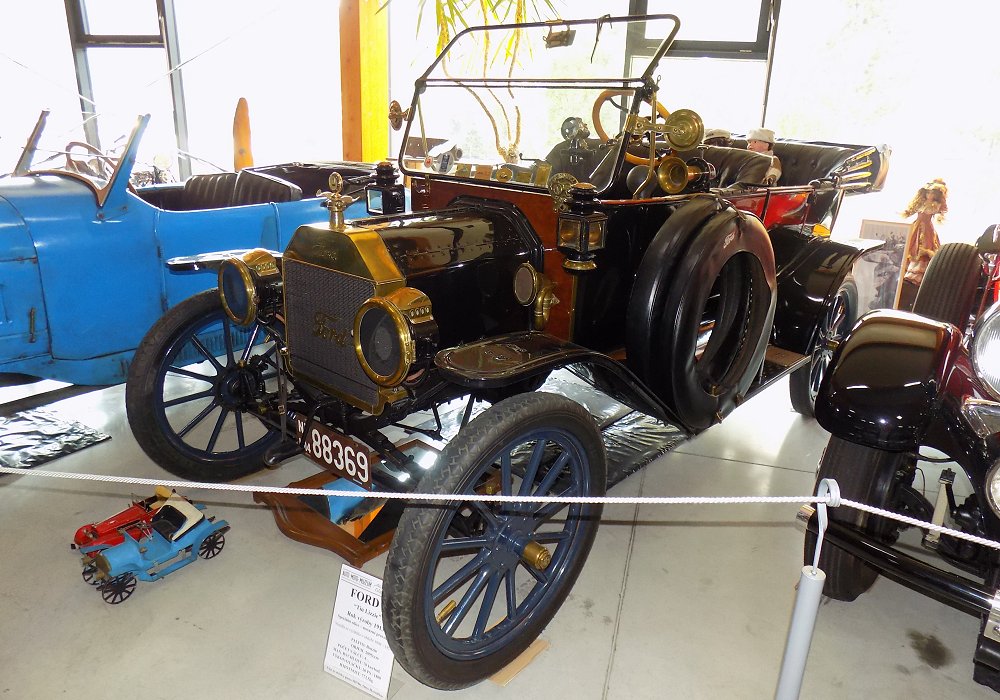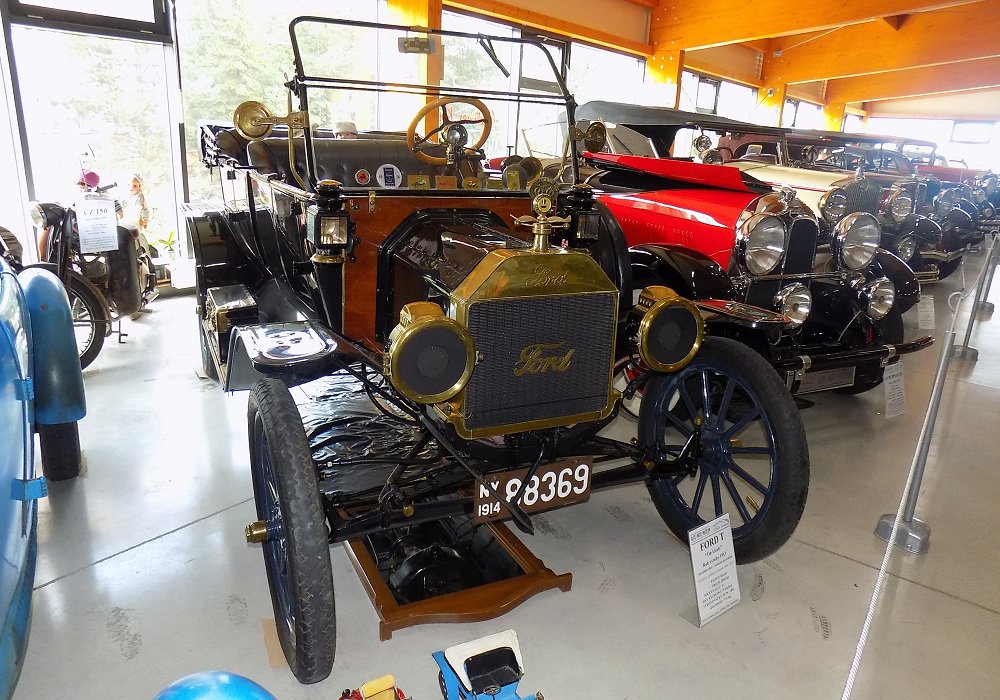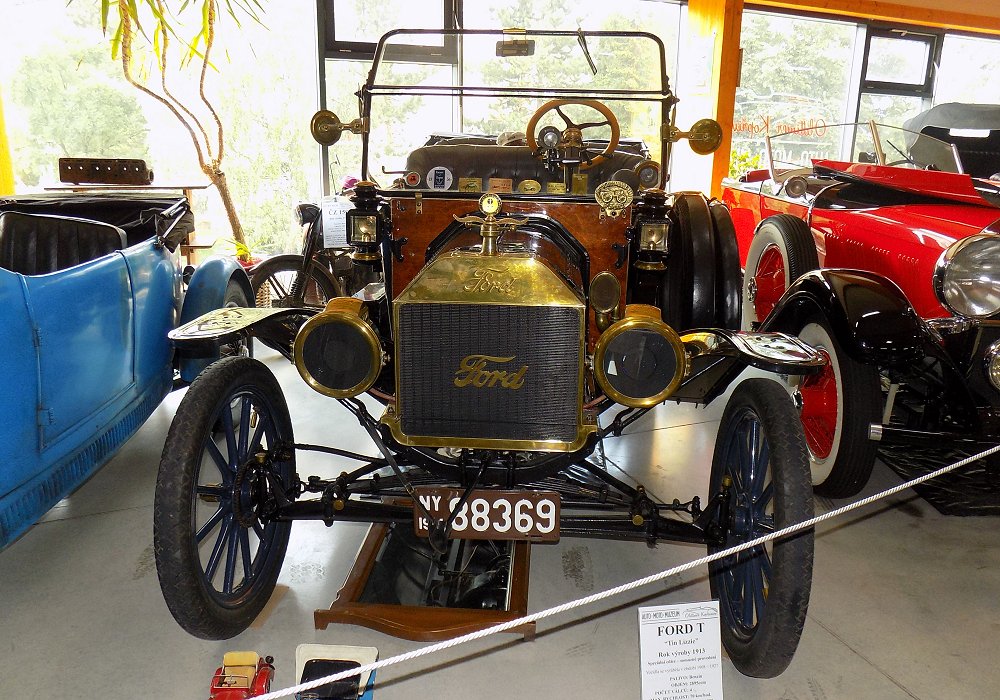Description
The Ford Model T, introduced in 1908, is one of the most important automobiles in history and the car that truly “put the world on wheels.” It was the first mass-produced car to be made affordable for ordinary people, thanks to Henry Ford’s pioneering use of the moving assembly line and standardized parts. Built until 1927, with over 15 million units produced, the Model T became a global symbol of practical, reliable, and democratic motoring.
Mechanically, the Model T was simple but effective. It used a 177 cubic inch (2.9-liter) inline four-cylinder engine that produced about 20 horsepower. Power was transmitted through a unique two-speed planetary transmission, operated entirely by pedals, which made the car easier to drive than many of its contemporaries. Top speed was around 35–45 mph, enough for the rough, often unpaved roads of early 20th-century America. Its suspension used transverse leaf springs front and rear, giving it rugged durability and adaptability across terrain.
The Model T was offered in a wide variety of body styles over the years, including the Runabout, Touring, Coupe, Sedan, Depot Hack, and Pickup. Early examples, built during the so-called “brass era,” featured brass radiators, lamps, and fittings, giving them a distinctive character. From 1915 onward, the “black era” began, when Henry Ford standardized production to improve efficiency, famously offering customers “any color so long as it is black.” This uniformity allowed Ford to produce cars at unprecedented speed and scale, drastically reducing costs. By the mid-1910s, the Model T sold for less than $300, putting it within reach of farmers, workers, and middle-class families.
The impact of the Model T went far beyond the car itself. It transformed transportation by giving millions of people their first personal automobile, enabling mobility, independence, and economic opportunity on a scale never before seen. The assembly-line methods developed for the Model T reshaped manufacturing across industries, and the car’s ubiquity spurred the creation of modern infrastructure, from paved roads to fueling stations.
By the time production ended in 1927, the Model T had become a cultural icon. Though it was eventually surpassed by more modern and comfortable cars, its role in motorizing the world remains unparalleled. Today, the Model T is celebrated as the car that revolutionized not only the automobile industry but also society itself. Collectors and enthusiasts value it as both a mechanical marvel of its era and a symbol of the power of innovation and mass production to change the world.


